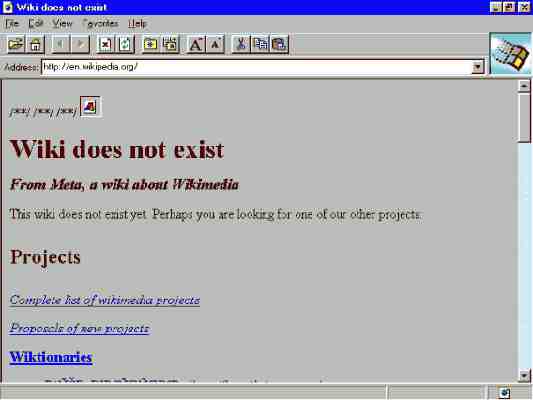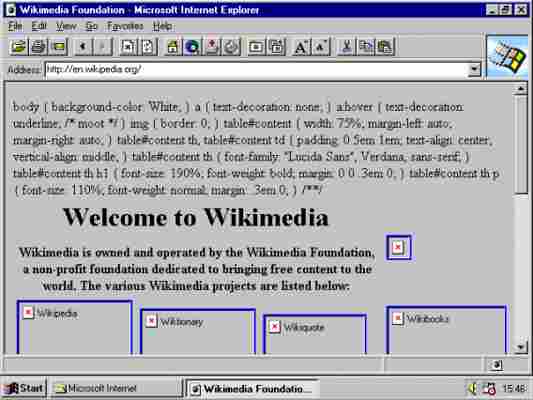Microsoft has been dropping hints that it would be dropping the Internet Explorer brand from its browser for a while. It’s upcoming browser, codenamed Project Spartan , showed that the company was ready to ditch the infamous IE name. Well, the company is finally ready to move on from Internet Explorer, announced Microsoft marketing chief Chris Capossela.
“We’re now researching what the new brand, or the new name, for our browser should be in Windows 10,” said Caposella during Microsoft’s Convergence conference. “We’ll continue to have Internet Explorer, but we’ll also have a new browser called Project Spartan, which is codenamed Project Spartan. We have to name the thing.”
Internet Explorer will still be included in specific versions of Windows 10 for enterprise customers but most users won’t see IE again . Although it’s a little sad to see a twenty year old browser fade away, it makes sense for Microsoft to abandon the name. Internet Explorer has long been the butt of every browser joke for being slow, insecure, and unable to catch up to the more forward-looking Firefox and Chrome browsers.
Let’s take this time to say a proper goodbye to Internet Explorer with an abbreviated history of the most hated browser in the world.
Internet Explorer 1
Image credit: Wikimedia

Release date: August 16th, 1995
The first version of Internet Explorer was extremely basic, featuring basic HTML rendering and not much else. Remember, HTML was still in its infancy and this first version of IE only supported twenty HTML tags.
Internet Explorer 2
Image credit: Wikimedia

Release date: November 22, 1995
The second version of IE shipped with Windows 95 and Windows NT. It brought a ton of new functionality with support for SSL, cookies, and internet newsgroups. The browser even made it onto the Mac and Windows 3.1 in 1996.
While we’re used to our browsers being free, Microsoft charged $19.99 for its Internet Starter Kit for Windows 95, which included a how-to book, the browser and 30 days of internet access on MSN.
Internet Explorer 3
Image credit: Browser Museum
Release date: August 1996
Version three of IE brought along support for Cascading Style Sheets (CSS) , which we still use today. This web programming language allows web developers to change the formatting and look for documents, something the web still relies on to this day.
The interface was massaged heavily and simplified, with big buttons for “Back,” “Refresh,” and “Home” at the top. Microsoft also moved things around to make the browser easier to use. The “Links” toolbar could also be minimized when not in use.
This release of Internet Explorer also brought the iconic “e” logo that slowly evolved over the years.
Internet Explorer 4
Image credit: Wikimedia
Release date: September 1997
This is when things got interesting for Internet Explorer. Version 4 was the first version of IE to be bundled with Microsoft’s Windows operating system, sparking an antitrust lawsuit from the US Justice Department. The bundling of IE with Windows resulted in years of litigation not only in the US but in Europe as well.
By bundling IE with Windows, Microsoft controlled 60% of the browser market , making IE synonymous with the internet for many users.
Internet Explorer 5
Image credit: Wikimedia
Release date: March 1999
Version five of Internet Explorer didn’t change much visually but Microsoft ended up massaging the browser into an elegant tool (for the time). The browser came bundled with Windows 98 but Microsoft took great pains to ensure backwards compatibility, allowing IE 4 to be run alongside IE5 for legacy users.
Internet Explorer 6
Release date: August 2001
As the internet evolved, so did Internet Explorer. Pop-up ads were becoming a huge irritation for web users and Internet Explorer 6 was the first version of the browser to include a pop-up blocker. The browser also included a download manager and a tool to clear your browsing history.
IE 6 also brought along the new “information bar,” which was designed to reduce the possibility of users mis-clicking on links that tried to install unwanted software. The browser was bundled with Windows XP and marked Microsoft’s discontinuation of Internet Explorer for Mac , forcing Mac users to use Safari . In fact, Microsoft decided that new Internet Explorer versions would only come with new versions of Windows, making IE an integral part of Windows .
IE6 also marked a turning point for the browser as Microsoft continued to squash competition and made the browser impossible to uninstall from Windows. IE market share skyrocketed to an astronomical 95% , giving Microsoft little incentive to innovate as it had done with previous versions. While Firefox was good about adopting web standards, Microsoft ignored them and it became a huge problem for web developers.
Masses of Internet Explorer users began migrating to Firefox because of compatibility issues, security holes, and constant crashing.
Internet Explorer 7
Release date: October 2006
It took Microsoft over five years to release Internet Explorer 7 and by then, it was too little too late . Most savvy internet users jumped to Firefox. IE7 failed to win over defectors since it didn’t do anything markedly better than Firefox. It was a solid browser but it didn’t give Firefox users any reason to switch.
Microsoft also reversed its decision to only include new versions of IE with new versions of Windows .
Internet Explorer 8
Release date: March 2009
Internet Explorer 8 launched with Windows 7 and offered a nice browsing experience but it still failed to draw in users. Reviewers were impressed with IE8, noting it was much better than IE7 in terms of security, features, and supporting web standards.
Still, Microsoft was playing catch up to the competition and Internet Explorer market share continued to decline.
Internet Explorer 9
Release March 2011
This was the first major update to Internet Explorer that wasn’t tied to the release of an operating system. The browser was well received for its minimalist design and support for HTML5. Tabs were grouped up top with the address bar, helping give the maximum screen real estate for web content.
The browser also hid a lot of extraneous features behind a menu button to help maximize space. This would prove a bit confusing for some users but it worked well to hide annoying things like toolbars and tools you only use once in a blue moon.
Internet Explorer 10
Release date: August 2012
With the release of Windows 8 came the release of Internet Explorer 10 . The browser featured two modes: one for the desktop and one designed for touch. Windows 8 confused users with its dual purpose operating system and new Start Menu , which didn’t help make IE10 any less confusing.
Windows 7 users who wanted to use the new browser were out of luck in the beginning. Microsoft released a preview later in the year and finally made it available for Windows 7 users in February 2013.
Internet Explorer 11
Release date: October 2013
Internet Explorer 11 impressed with a speedy web browsing experience. It beat out both Chrome 30 and Firefox 26 in a couple of web browser benchmark tests. While Chrome was known as one of the fastest browsers available at the time, Internet Explorer actually took the crown for speed .
Both Chrome and Firefox slowly became bloated, using a ton of RAM but IE11 used less RAM than both competitors . It’s too bad that users still associated IE with security flaws and a bloated browsing experience.
The competition also offered more compelling ecosystems , offering syncing between devices and computers. IE remained a Windows only browser when its competition moved onto phones and tablets.
Goodnight, sweet prince
Image credit: Microsoft
Although the Internet Explorer name may be dead, Microsoft isn’t giving up on creating a great browser. The company’s upcoming browser, codenamed Project Spartan look promising but Microsoft still doesn’t know what to call it.
The company is committed to being active on social media, listening to the gripes of users and taking comments to heart. Hopefully Microsoft learned its lesson about resting on its laurels as it did when Internet Explorer controlled 95% of the browser market.
Related Stories
Windows more secure than OSX? Not so fast.
How Opera is different from Chrome and why you should try it
The best web browser for Android – Sam’s choice
Follow me on Twitter: @lewisleong











